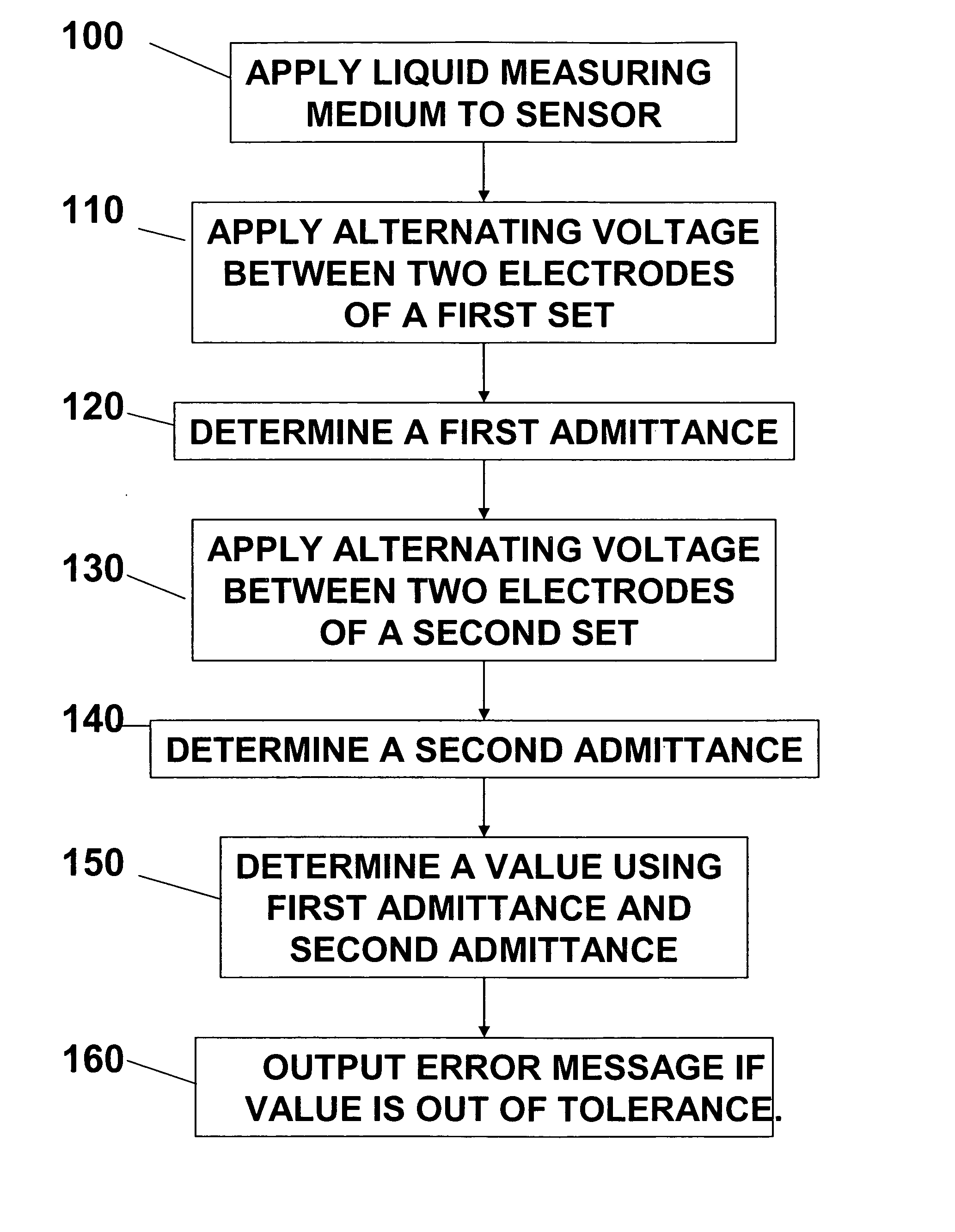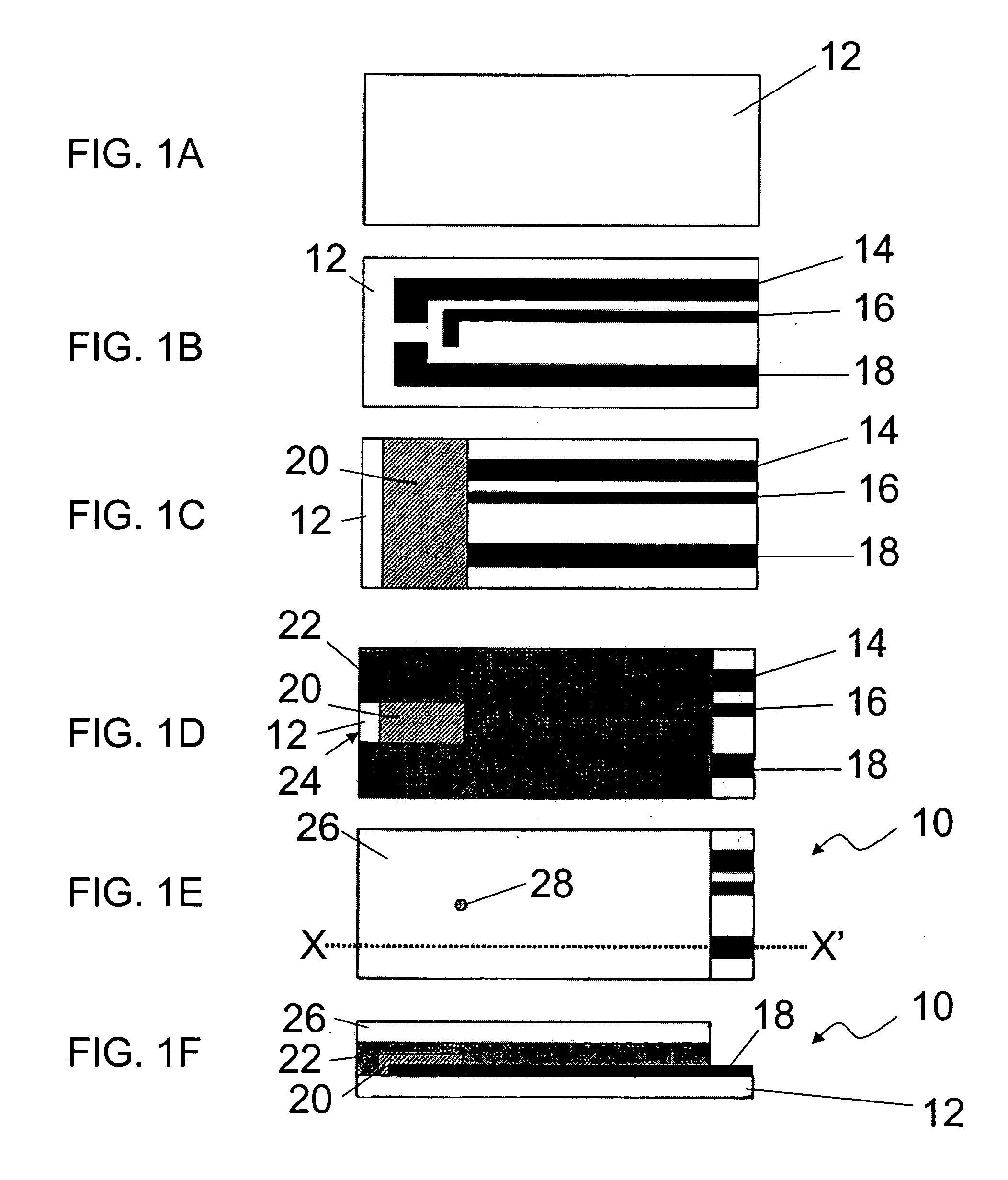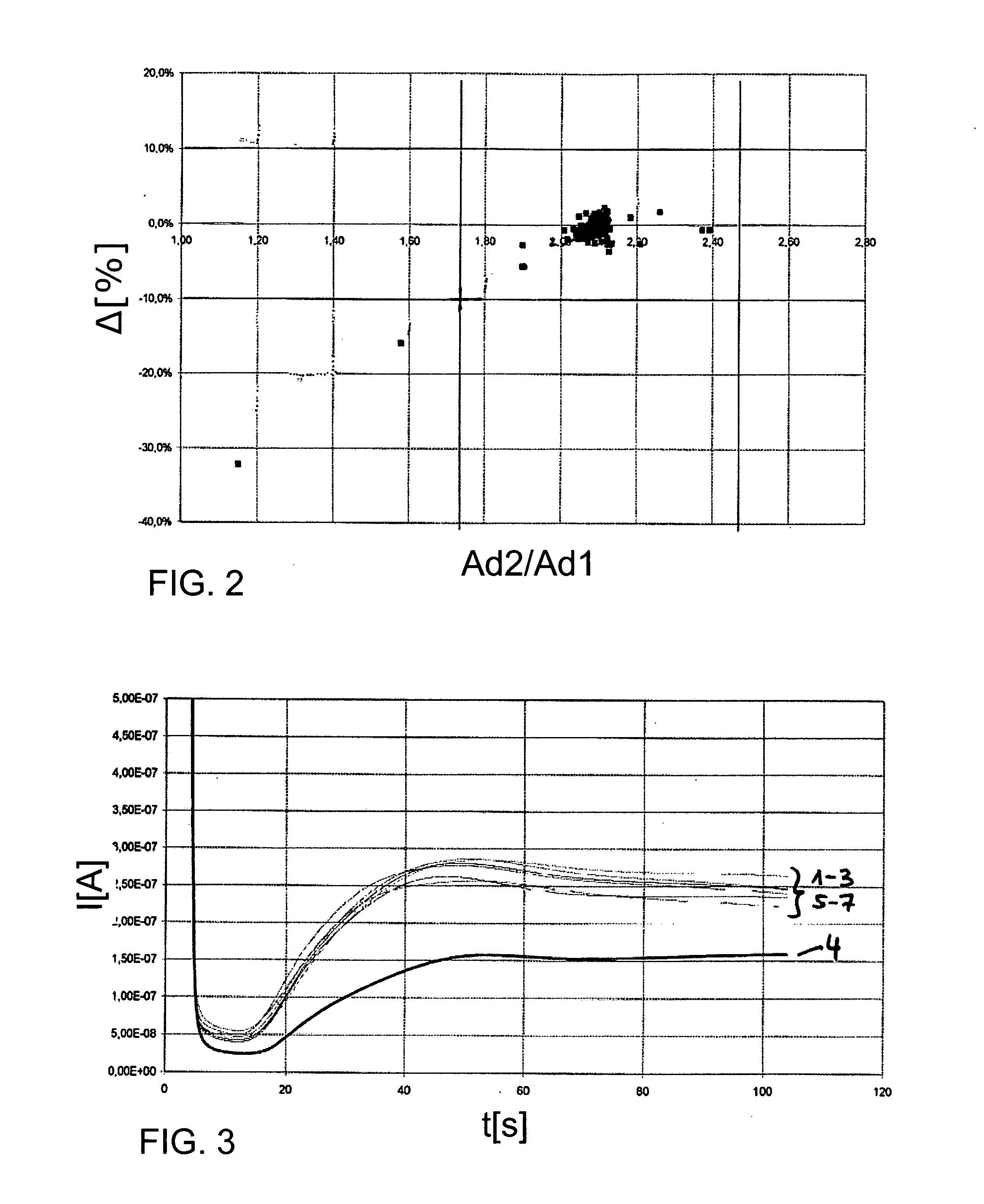Method and system for error checking an electrochemical sensor
an error checking and electrochemical sensor technology, applied in the field of electrochemical sensors, can solve the problems of changing the detection surface in the measuring chamber, and the geometry of the detection zone in the measuring chamber deviating from the specification of individual test carriers
- Summary
- Abstract
- Description
- Claims
- Application Information
AI Technical Summary
Problems solved by technology
Method used
Image
Examples
example 1
Checking Electrochemical Sensors
[0072] An alternating voltage (8 mV; 10 kHz) is applied for a period of 0.15 seconds to the electrode Set 1 of sensor 10 and the conductivity is measured. The signal that is determined is referred to as the first admittance (Ad1).
[0073] After a waiting time (1 second), an alternating voltage (8 mV; 10 kHz) is applied to the electrode Set 2 of sensor 10 for a period (3 seconds), and the conductivity is measured. The signal that is determined is referred to as the second admittance (Ad2).
[0074] The quotients of first admittance and second admittance (Ad2 / Ad1) are determined as the so-called “failsafe admittance” signals.
example 2
Detection of Defective Coagulation Test Strips
[0075] The parameter “failsafe admittance” (Ad2 / Ad1) for diverse coagulation test strips of Example 1 is plotted against the coagulation time measured with these test strips in FIG. 2.
[0076] A target range was defined for the failsafe admittance (vertical continuous lines). All test strips whose failsafe admittance was within the target range exhibit coagulation values within a very narrow window (+ / −10%; horizontal continuous lines) around the mean value for the batch.
[0077] All test strips for which coagulation times are measured outside of the 10% window are detected as defective because they generate “failsafe admittance” signals which lie outside the “failsafe admittance” target range.
TABLE 1Comparison of the admittance ratios for five exemplary test stripsand the coagulation values that were measured with them.Coagulation time [s]Admittance A [10−4]Assessmentrel.AssessmentStripSampleA1A2A2 / A1admittanceactualtargetdeviationcoag...
example 4
Coagulation Test Strips with an Electrode Surface that is Too Large
[0083]FIG. 4 shows current / time curves that were generated as described in Example 2.
[0084] Three experiments were run using three test strips (see Table 3). Intact test strips were used in experiments 1 and 2. A test strip was used in experiment 3 whose working electrode had an active surface that was too large as is observed for example when sample liquid migrates under a spacer which determines the working electrode geometry. Currents that were too high were measured for this test strip. This results in coagulation times that are too short.
[0085] As shown in Table 3 the test strip whose working electrode had an active surface that was too large was detected as defective by the parameter “failsafe admittance”.
TABLE 3Comparison of the admittance ratios for three exemplary test stripsand the coagulation values that were measured with them.Coagulation time [s]Admittance A [10−4]Assessmentrel.AssessmentStripA1A2A2...
PUM
| Property | Measurement | Unit |
|---|---|---|
| thickness | aaaaa | aaaaa |
| frequency | aaaaa | aaaaa |
| alternating voltage | aaaaa | aaaaa |
Abstract
Description
Claims
Application Information
 Login to View More
Login to View More - R&D
- Intellectual Property
- Life Sciences
- Materials
- Tech Scout
- Unparalleled Data Quality
- Higher Quality Content
- 60% Fewer Hallucinations
Browse by: Latest US Patents, China's latest patents, Technical Efficacy Thesaurus, Application Domain, Technology Topic, Popular Technical Reports.
© 2025 PatSnap. All rights reserved.Legal|Privacy policy|Modern Slavery Act Transparency Statement|Sitemap|About US| Contact US: help@patsnap.com



